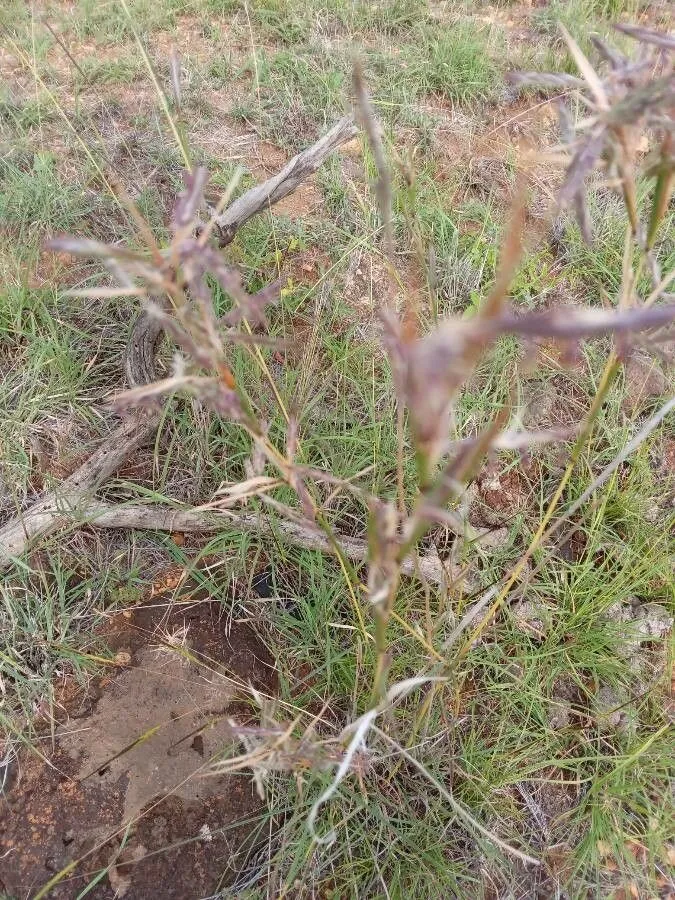
Author: (Hochst.) Stapf
Bibliography: D.Oliver & auct. suc. (eds.), Fl. Trop. Afr. 9: 322 (1919)
Year: 1919
Status: accepted
Rank: species
Genus: Hyparrhenia
Vegetable: False
Observations: Trop. & S. Africa, Madagascar, Trop. & Subtrop. Asia to E. Australia
Tambookie grass, scientifically named Hyparrhenia filipendula, is a robust, perennial grass native to tropical and southern Africa, extending its presence into Madagascar, tropical and subtropical Asia, and eastern Australia. Distinguished by its resilience and adaptability, Tambookie grass thrives in a variety of climates and landscapes, contributing to the ecological diversity of these regions.
Belonging to the Poaceae family, this grass is characterized by its dense clumps of tall, erect stems, which can reach considerable heights. The grass produces distinctive flowering spikes, which are integral to its identification and ecological role. The adaptability of Tambookie grass to different environmental conditions makes it a crucial species for grazing in natural pastures and a valuable component in soil stabilization and erosion control efforts.
Hyparhennia filipendula was first documented in a significant reference work, Flora of Tropical Africa, edited by D. Oliver and subsequent contributors in 1919. Esteemed botanist Otto Stapf, who formally described the species, emphasized its widespread utility and ecological importance.
In summary, Tambookie grass stands out not only for its wide geographical distribution but also for its vital role in maintaining the health and stability of the ecosystems it inhabits. Its adaptability and ecological benefits underscore its enduring value in the regions where it naturally occurs.
Eng: tambookie grass, fine thatching grass, hairy-bluegrass
Afr: fyntamboekiegras
En: Tambookie grass, Fine thatching grass, Hairy-bluegrass, Hyparrhenia, Fine thatch grass
Af: Fyntamboekiegras, Fyn dekgras
Ar: حمرور إكليلية المروج
Zh: 纤细苞茅
Fi: Savannipartaheinä
Ff: Fetinari
© copyright of the Board of Trustees of the Royal Botanic Gardens, Kew.
Taken Jan 29, 2021 by susan brown (cc-by-sa)
Taken Jan 29, 2021 by susan brown (cc-by-sa)
Taken Jan 22, 2022 by William Korosian (cc-by-sa)
Taken Jan 30, 2022 by William Korosian (cc-by-sa)
Taken Jan 22, 2022 by William Korosian (cc-by-sa)
Taken Dec 6, 2020 by susan brown (cc-by-sa)
Taken Dec 6, 2020 by susan brown (cc-by-sa)
Taken Dec 6, 2020 by susan brown (cc-by-sa)
Taken Dec 7, 2022 by Susan Brown (cc-by-sa)
Taken Jan 6, 2022 by susan brown (cc-by-sa)
Growth habit>: Graminoid
Family: Myrtaceae Author: (F.Muell.) K.D.Hill & L.A.S.Johnson Bibliography: Telopea 6: 402 (1995) Year: 1995 Status:…
Family: Rubiaceae Author: Pierre ex A.Froehner Bibliography: Notizbl. Bot. Gart. Berlin-Dahlem 1: 237 (1897) Year:…
Family: Sapindaceae Author: Koidz. Bibliography: J. Coll. Sci. Imp. Univ. Tokyo 32(1): 38 (1911) Year:…
Family: Asteraceae Author: A.Gray Bibliography: Pacif. Railr. Rep.: 107 (1857) Year: 1857 Status: accepted Rank:…
Family: Fabaceae Author: Medik. Bibliography: Vorles. Churpfälz. Phys.-Ökon. Ges. 2: 398 (1787) Year: 1787 Status:…
Family: Aspleniaceae Author: (Cav.) Alston Bibliography: Bull. Misc. Inform. Kew 1932: 309 (1932) Year: 1932…